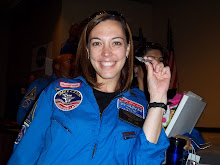Technology tools such as spreadsheets, web resources, and tools which collect data are three such tools that, when added to the constructionist classroom, have the potential to increase engagement and allow the learner to focus on real-world applications to content, as opposed to tedious data collection or calculations of the past. When students use these technology tools to “generate and test hypotheses, they are engaging in complex mental processes, applying content knowledge like facts and vocabulary, and enhancing their overall understanding of the content” (Pitler, Hubbell, Kuhn, & Malenoski, 2007, pp. 202-203).
 Taking this learning process a step further and integrating ways for students to share the results of their tests and to receive feedback in a collaborative manner, preferably online as in a Wiki, gives them yet another real-world application. The world that we, as adults, work in is very much a collaborative, group process, with a facilitator (“the boss”) at the lead. The facilitator ensures that each member of the group knows the task as hand and then trusts that each will do his/her part to get the job done. Each member of a group brings something special to the table and when an individual struggles, the rest of the group offers suggestions, advice, or assistance in getting the job done. Why not allow our students to practice what they will be doing as adults in the real world?
Taking this learning process a step further and integrating ways for students to share the results of their tests and to receive feedback in a collaborative manner, preferably online as in a Wiki, gives them yet another real-world application. The world that we, as adults, work in is very much a collaborative, group process, with a facilitator (“the boss”) at the lead. The facilitator ensures that each member of the group knows the task as hand and then trusts that each will do his/her part to get the job done. Each member of a group brings something special to the table and when an individual struggles, the rest of the group offers suggestions, advice, or assistance in getting the job done. Why not allow our students to practice what they will be doing as adults in the real world?Pitler, H., Hubbell, E., Kuhn, M., & Malenoski, K. (2007). Using technology with classroom instruction that works. Alexandria, VA: ASCD.
Orey, M.(Ed.). (2001). Emerging perspectives on learning, teaching, and technology. Retrieved from http://projects.coe.uga.edu/epltt/index.php?title=Main_Page






